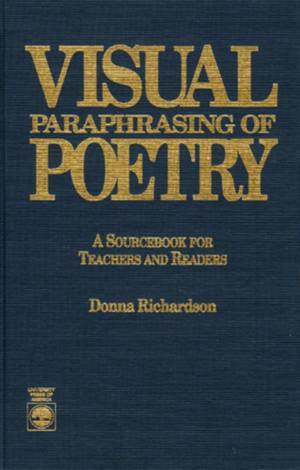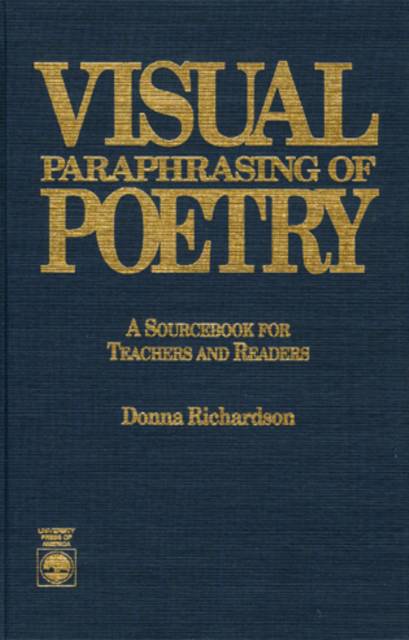
- Afhalen na 1 uur in een winkel met voorraad
- Gratis thuislevering in België vanaf € 30
- Ruim aanbod met 7 miljoen producten
- Afhalen na 1 uur in een winkel met voorraad
- Gratis thuislevering in België vanaf € 30
- Ruim aanbod met 7 miljoen producten
Zoeken
Visual Paraphrasing of Poetry
A Sourcebook for Teachers and Readers
Donna Richardson
Paperback | Engels
€ 51,95
+ 103 punten
Uitvoering
Omschrijving
Visual Paraphrasing introduces a method for helping students from high school through college to read poetry with more accuracy and personal involvement. Like verbal paraphrasing, sketches help the reader see what is literally described in a poem, what is not, and what is ambiguous. The technique combines traditional interpretive ends with means compatible with reader-response theory and process-oriented writing approaches. The book contains an introduction relating the technique to literary theory, for those interested in such issues. Those primarily concerned with helping students learn to read poetic language may skip to the examples, which move from the extremely simple to the sublimely complex. Examples of the technique applied to prose are also included, as are some related applications of drawing for the teaching of literature (maps, schemata of world-views, and illustration as opposed to visual paraphrase).
Specificaties
Betrokkenen
- Auteur(s):
- Uitgeverij:
Inhoud
- Aantal bladzijden:
- 222
- Taal:
- Engels
Eigenschappen
- Productcode (EAN):
- 9780819188205
- Verschijningsdatum:
- 19/11/1992
- Uitvoering:
- Paperback
- Formaat:
- Trade paperback (VS)
- Afmetingen:
- 152 mm x 229 mm
- Gewicht:
- 453 g

Alleen bij Standaard Boekhandel
+ 103 punten op je klantenkaart van Standaard Boekhandel
Beoordelingen
We publiceren alleen reviews die voldoen aan de voorwaarden voor reviews. Bekijk onze voorwaarden voor reviews.











